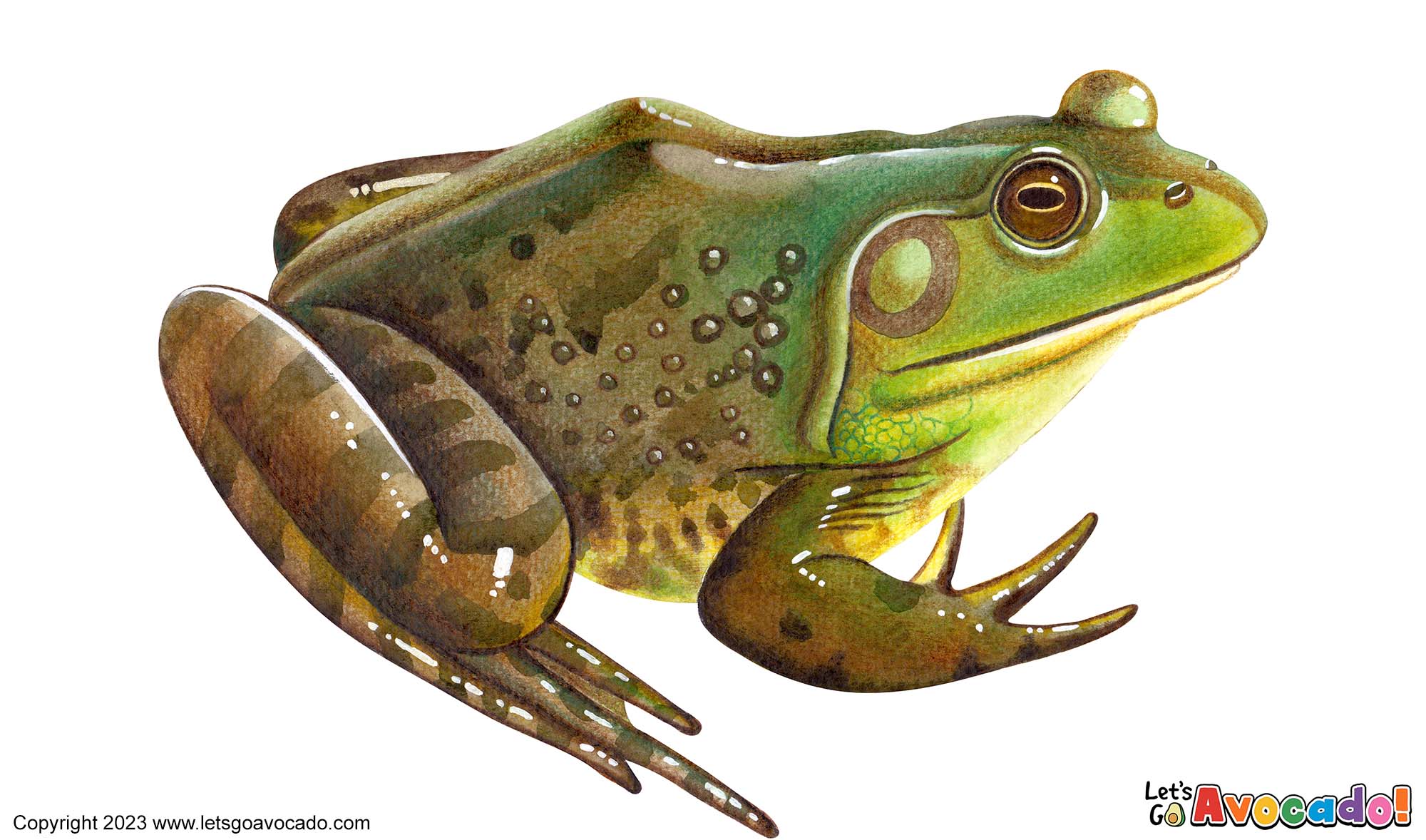

American Bullfrog
Bullfrog, Bullfrog Green
Lithobates catesbeianus
This page may contain affiliate links.
Read our disclosure and privacy policy here.
The American bullfrog, also known as Lithobates catesbeianus, is a remarkable amphibian that captures the imagination with its impressive size and distinct croaking calls. Found throughout North America, this frog is known for its green or brown coloration and powerful hind legs, which enable it to make astonishing leaps. Male American bullfrogs are well-known for their deep and resonant calls, often described as a loud “jug-o-rum” or “rumm, rumm.” These calls are primarily used by males during the breeding season to attract females and establish territories. The calls can be heard from a distance and are a characteristic sound of wetland areas. The American bullfrog holds a prominent place in our wetland ecosystemsAn ecosystem is a community of living organisms, like insects and birds, and non-living components, like water and rocks, that interact with each other in a specific area. Learn More and continues to captivate the attention of nature enthusiasts of all ages.
American Bullfrog

There’s a lot to explore right where we are, in our own neighborhoods and backyards! Join us while we get off the couch and explore the everyday wonders of nature, science, space, engineering, art, and anything else we stumble upon during on our adventures.







